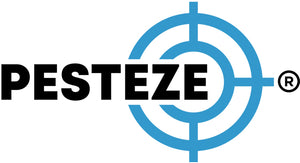BEST PRACTICES FOR HANDLING AN INJURED WILD ANIMAL

BEST PRACTICES FOR HANDLING AN INJURED WILD ANIMAL
SUMMARY
Encountering an injured wild animal can be distressing, but handling the situation properly is essential for both your safety and the animal’s well-being. Many wild animals can carry diseases or become aggressive when stressed, so it’s important to proceed with caution. Understanding the best methods to assess the situation, contact the proper authorities, and provide temporary aid can make a significant difference in the animal’s survival.
FEATURES
- Assessing The Situation: Observe the animal from a distance to determine the extent of its injuries before intervening.
- Minimizing Stress: Avoid loud noises and sudden movements that may cause panic or further injury.
- Using Protective Gear: Wear gloves or use a towel to handle the animal safely, reducing the risk of bites or disease transmission.
- Contacting Wildlife Experts: Notify local wildlife rehabilitators or animal control for guidance on how to proceed.
- Providing Temporary Shelter: If necessary, place the animal in a ventilated box in a quiet, dark place until professional help arrives.
- Avoiding Food And Water: Do not attempt to feed or give water to the animal unless advised by a professional.
DESCRIPTION
Finding an injured wild animal can be an emotional experience, but your actions can have a major impact on its survival. The first and most important step is to assess the situation from a distance. A wild animal may appear injured when it is simply resting or stunned, so observing its behavior for a few minutes can help determine whether intervention is necessary. If the animal is visibly injured, bleeding, or unable to move, it likely needs assistance. However, direct contact should be avoided whenever possible. Many wild animals will react defensively when approached, even if they are seriously injured.
If intervention is required, minimizing stress is critical. Loud noises, sudden movements, or direct eye contact can make the animal panic, potentially worsening its injuries. If you must handle it, always wear protective gloves or use a towel to create a barrier between yourself and the animal. Even small animals can bite or scratch when frightened, and some may carry diseases such as rabies or parasites that can be transmitted to humans.
The best course of action is to contact a licensed wildlife rehabilitator or animal control agency. These professionals have the training and resources to provide proper care. If an immediate response isn’t available, you can place the animal in a well-ventilated box with a soft lining and keep it in a quiet, dark area to reduce stress. However, feeding or giving water to an injured wild animal is not recommended, as improper feeding can cause serious harm.
Handling wildlife requires patience, care, and an understanding of local regulations. Some species are protected, and unauthorized handling may be illegal. In all cases, seeking professional help is the best approach to ensure both human and animal safety. By following these best practices, you can make a meaningful difference while minimizing risks.
- Maanas Mehta


Comments 0